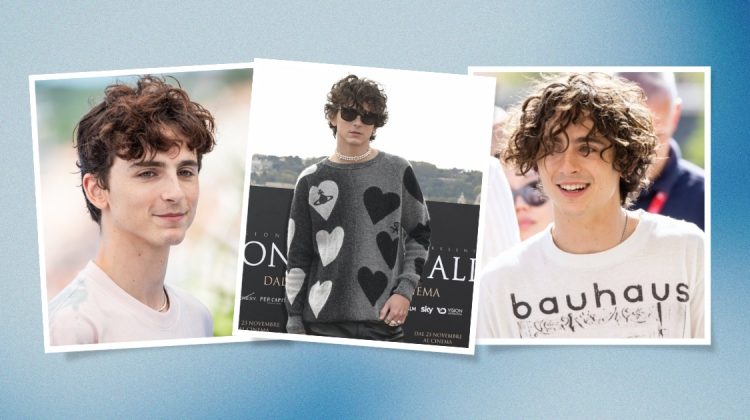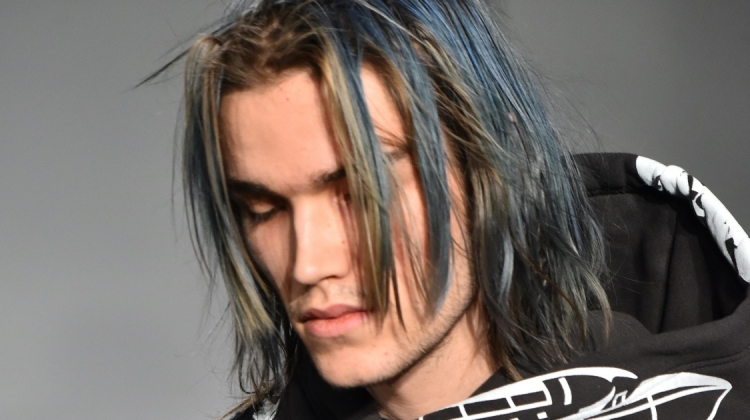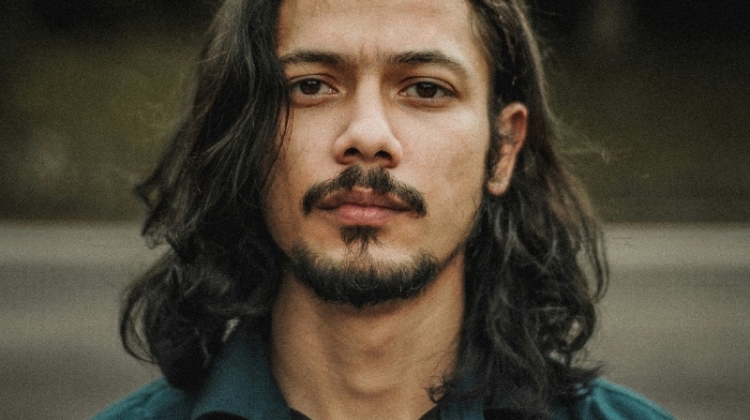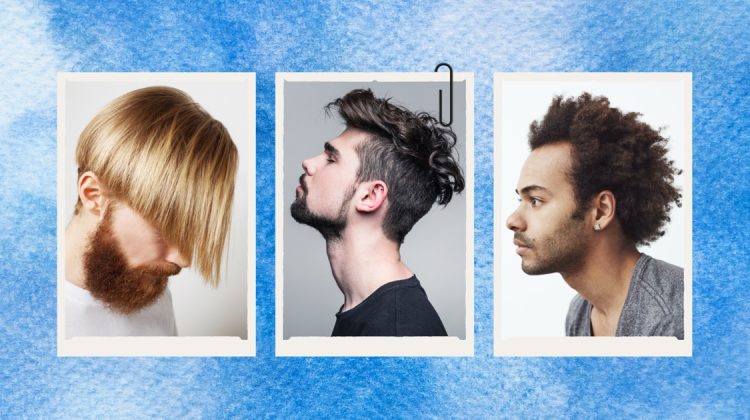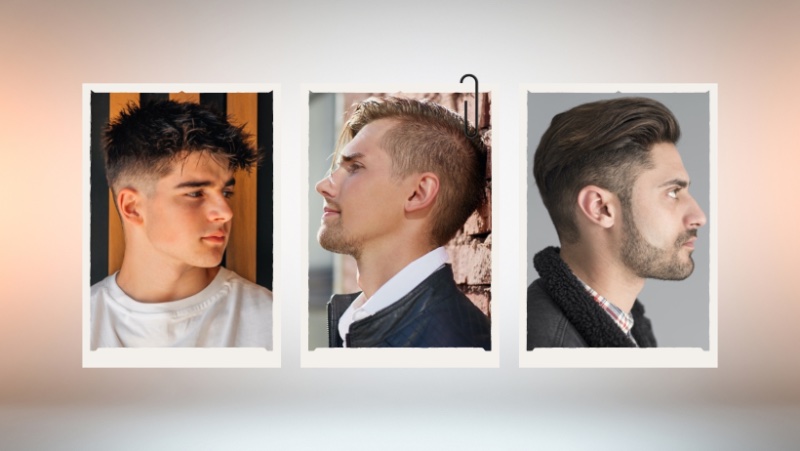
The undercut haircut, characterized by its distinctive shorter sides and longer top, is a versatile and popular choice in men’s hairstyling. It is a marker of innovation and style, with each variation reflecting the hairstyle’s adaptability and fashion-forward nature.
From the bold bowl cut undercut to the refined slick back undercut, these styles exude personality, an embodiment of individuality, and a statement of style. They bridge the classic charm of yesteryears and today’s bold, modern aesthetics.
Undercut Hairstyles for Men
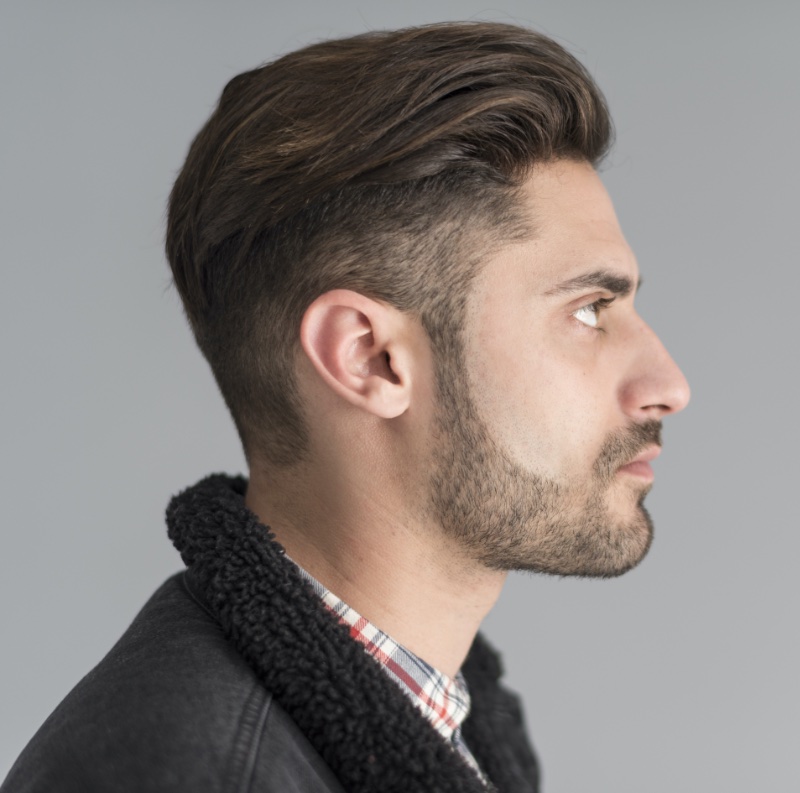
How Hair Length Shapes Your Undercut Options
With undercuts, the real personality shows in the top length. What you leave up top determines the look, whether you keep it sharp and simple or push it into bolder territory.
Short Hair Undercuts
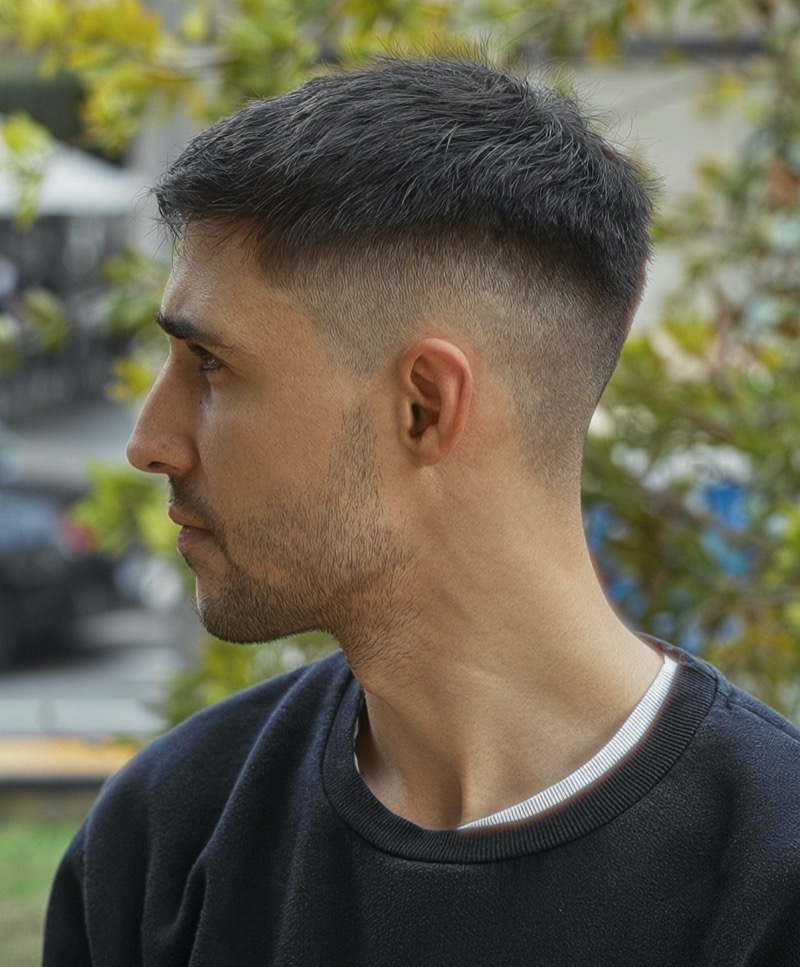
The short undercut keeps the top cropped with high, tight fades on the sides. It is a minimal, low-maintenance style that works well for straight or slightly wavy hair. Textured crops, razor parts, and clean lines make it easy to style while delivering a sharp look.
Medium-Length Undercuts
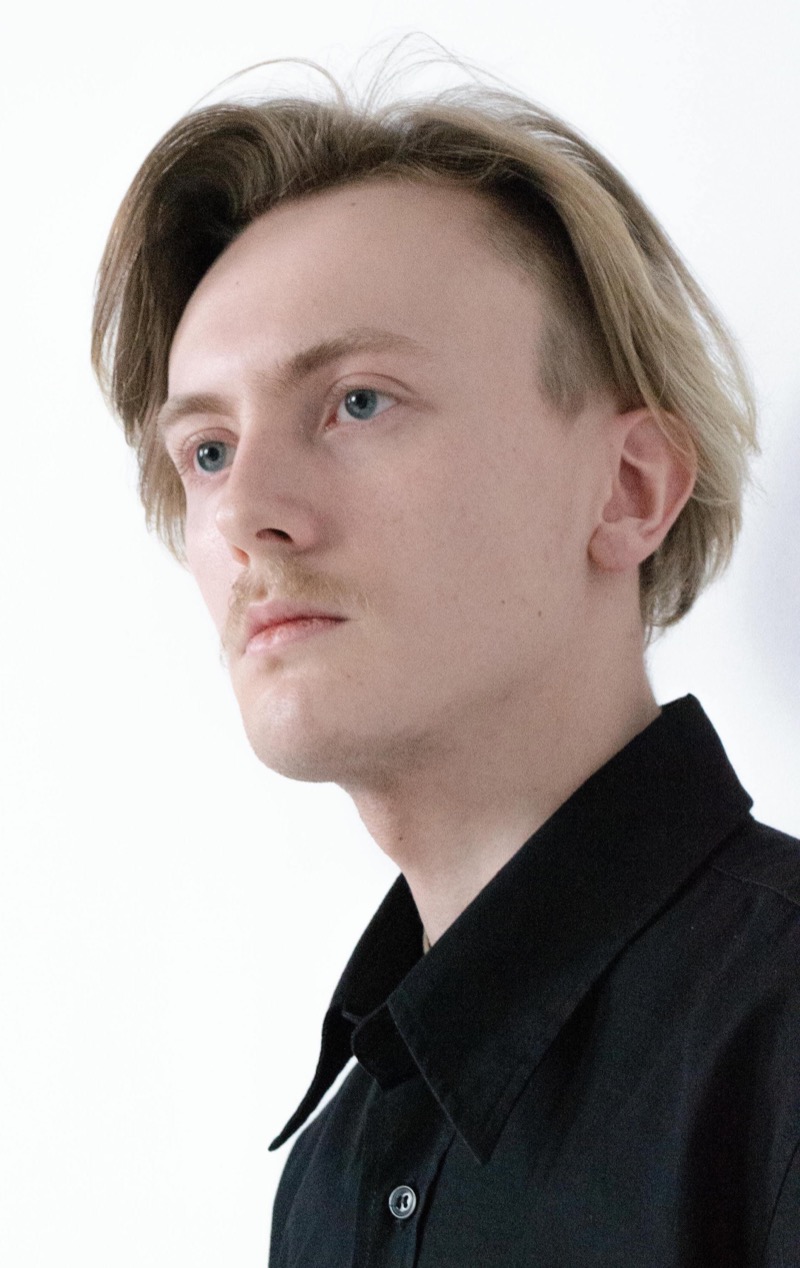
The medium undercut contrasts longer hair on top with cropped sides, leaving enough length to part, tuck, or wear loose. It works well with straight or wavy textures, adding shape up top while keeping the outline sharp.
Styles like quiffs, pompadours, and brushed-back looks come into play with a bit of product and styling time. The payoff is flexibility, movement, and a clean finish.
Long Hair Undercuts
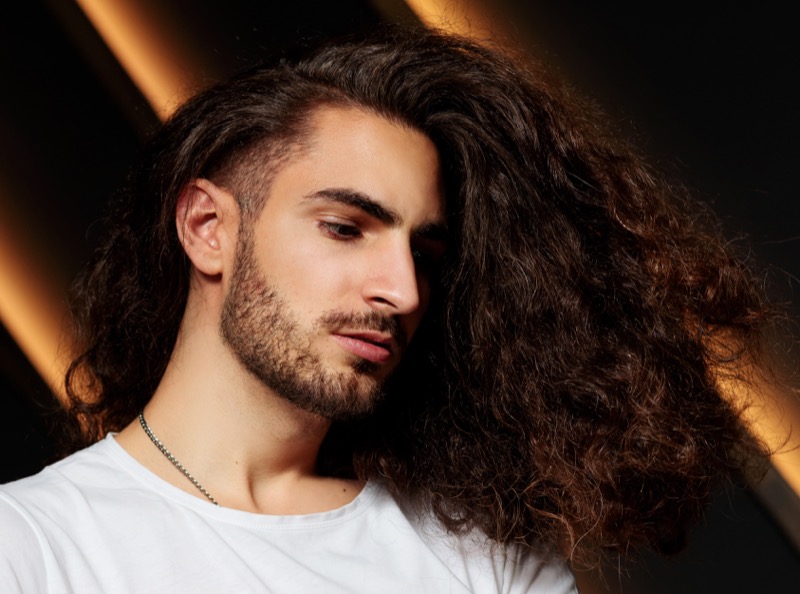
The long undercut pairs serious length on top with buzzed or faded sides, highlighting volume and texture. It suits curls and waves especially well, allowing the top to grow freely while the undercut keeps the edges defined.
Whether worn loose, tied back, or swept aside, this cut makes a statement. The bold contrast is perfect for those with a creative or adventurous style.
Popular Undercut Haircuts for Men
The undercut is more of a foundation than a single look. From sleek comb overs to bold mohawks and textured curls, each variation offers a different way to tailor the cut to your style, hair type, and personality. Here are some of the most popular takes on the undercut today:
Undercut with Beard
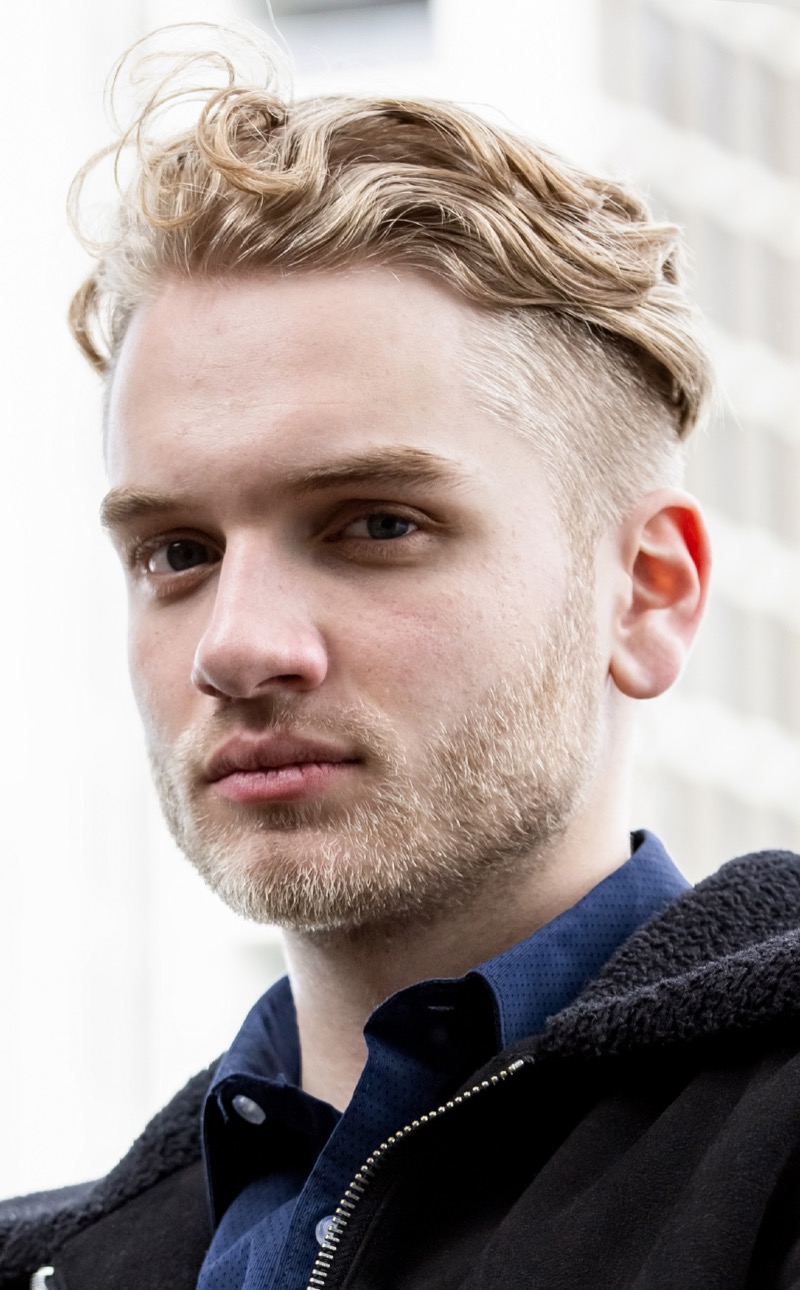
The undercut and beard combo offers plenty of style range, but balance is key. Sharp fades should complement your beard’s shape and density, not clash with it.
A tapered cut highlights a clean beard, while a longer top suits fuller facial hair for a rugged, refined look. Whether you wear stubble or a full beard, matching the fade to your beard’s contours creates a cohesive finish.
Afro Undercut
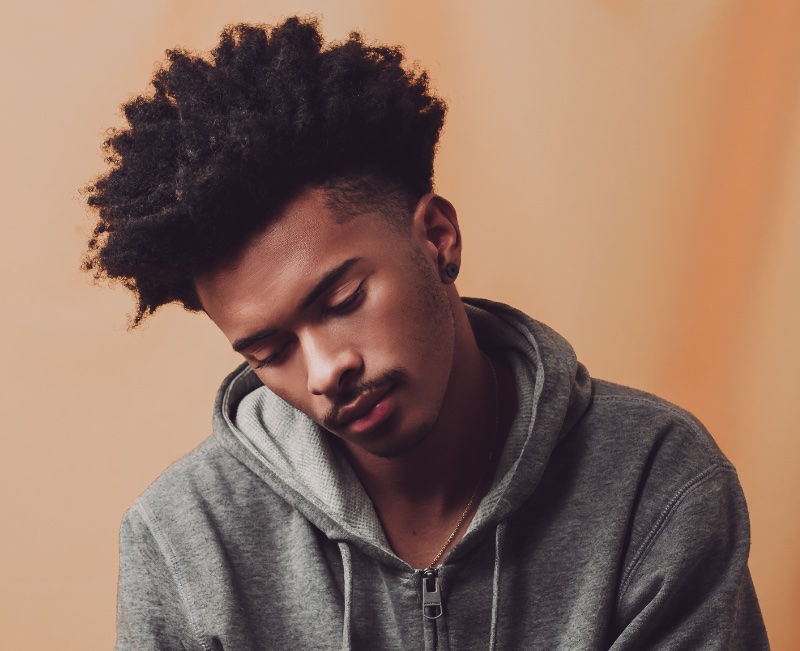
The afro undercut is an edgy take on the classic afro hairstyle, blending the voluminous curls characteristic of an afro with the clean lines of an undercut. In this look, the hair is left longer and full on top to emphasize its natural texture and shape, while the sides are closely trimmed or shaved to create a stylish contrast.
Bowl Cut Undercut

The bowl cut undercut is a unique fusion of retro and modern styles, featuring a distinctive straight-cut fringe and crown that resembles a bowl shape combined with sharply trimmed back and sides. This men’s undercut offers an unconventional take on the style, with its defined shape and separation between the longer hair on top and the undercut below.
Undercut Fade
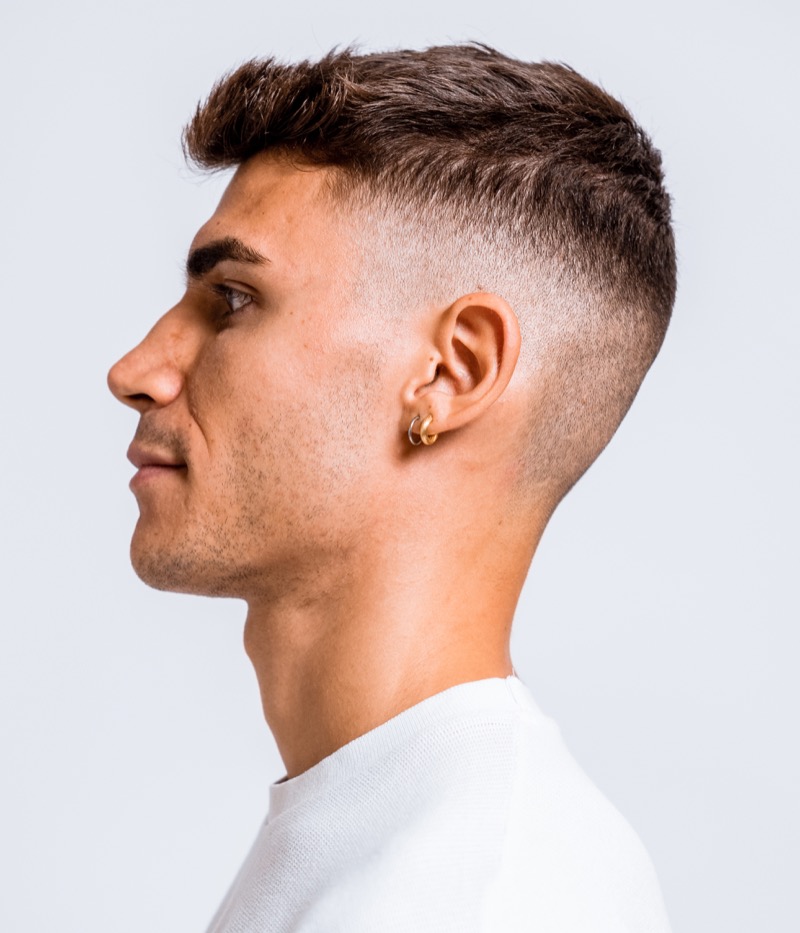
The undercut fade delivers contrast between the longer top and sides faded down to the skin. This style keeps the upper section short enough for easy styling; whether brushed up, forward, or textured, while the fade makes the transition nearly invisible.
Undercut Comb Over
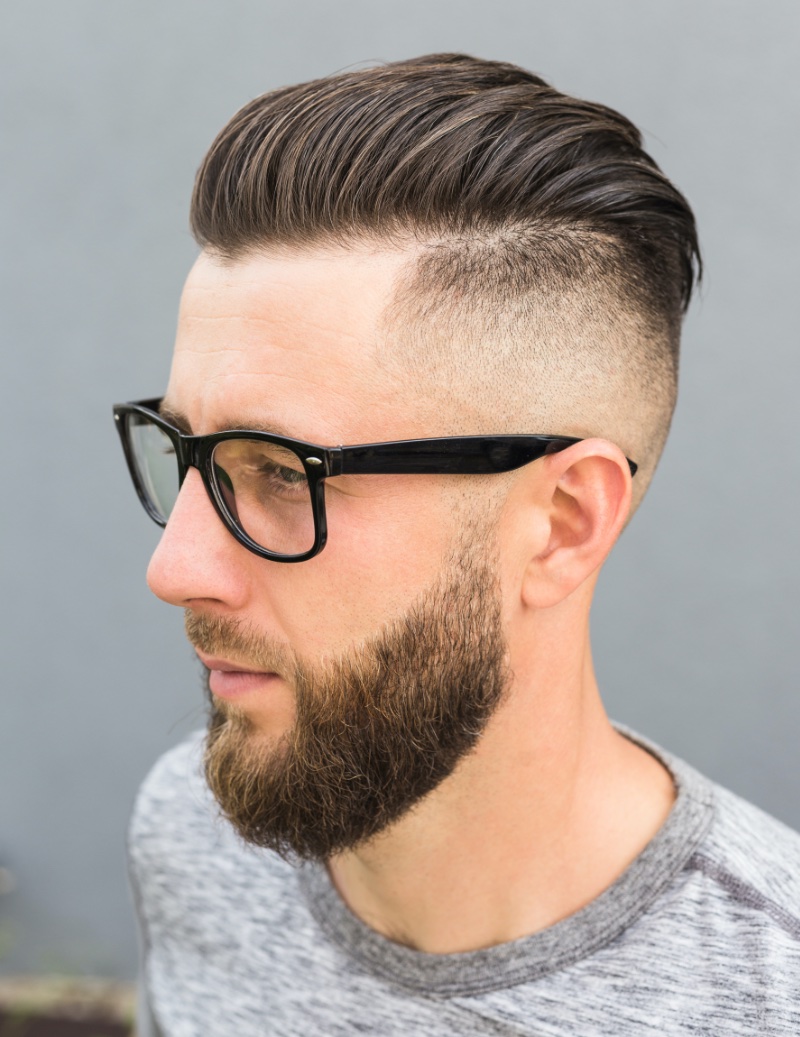
The undercut comb over is a blend of classic and modern, where the elegance of a comb over meets the distinctiveness of an undercut. This style features shaved sides that underscore the length on top, combed over smoothly.
Curly Undercut
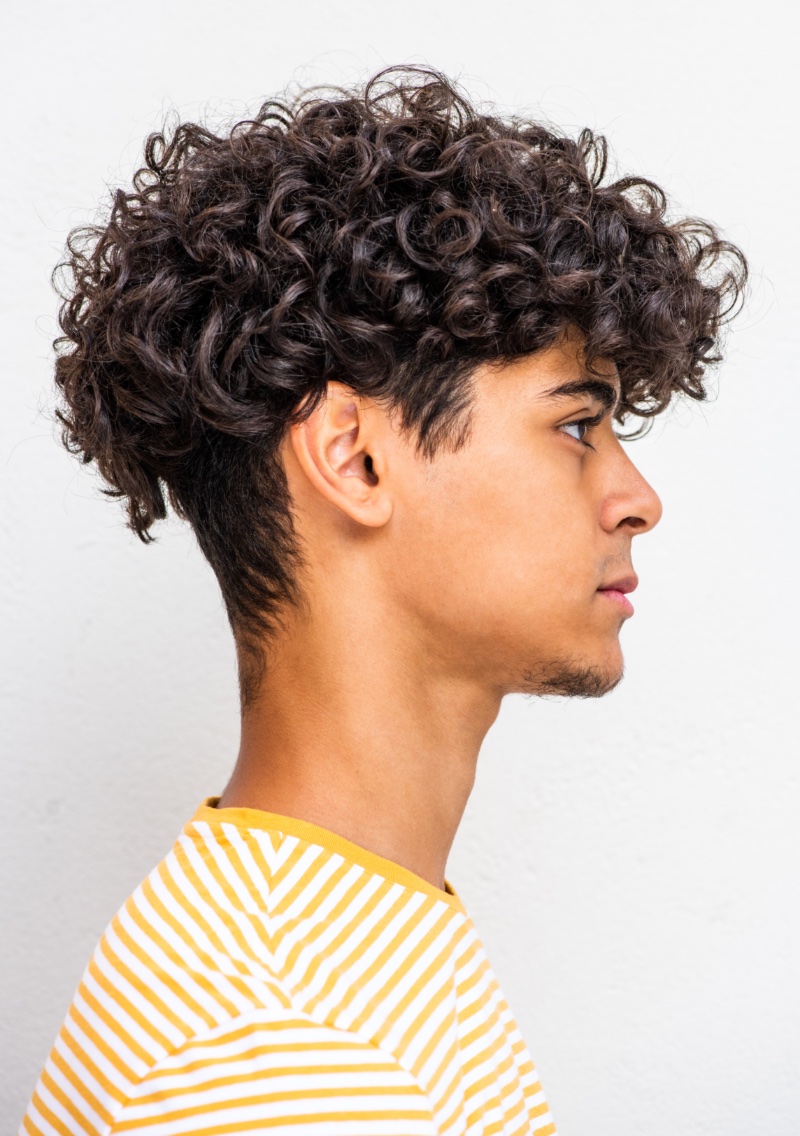
The curly undercut brings a playful dynamic to the classic undercut style. Keeping the sides trimmed allows the natural curls on top to become the focal point of the look. These men’s undercut hairstyles celebrate the texture and volume curls provide, creating an attractive contrast with the simpler sides.
High Fade Undercut
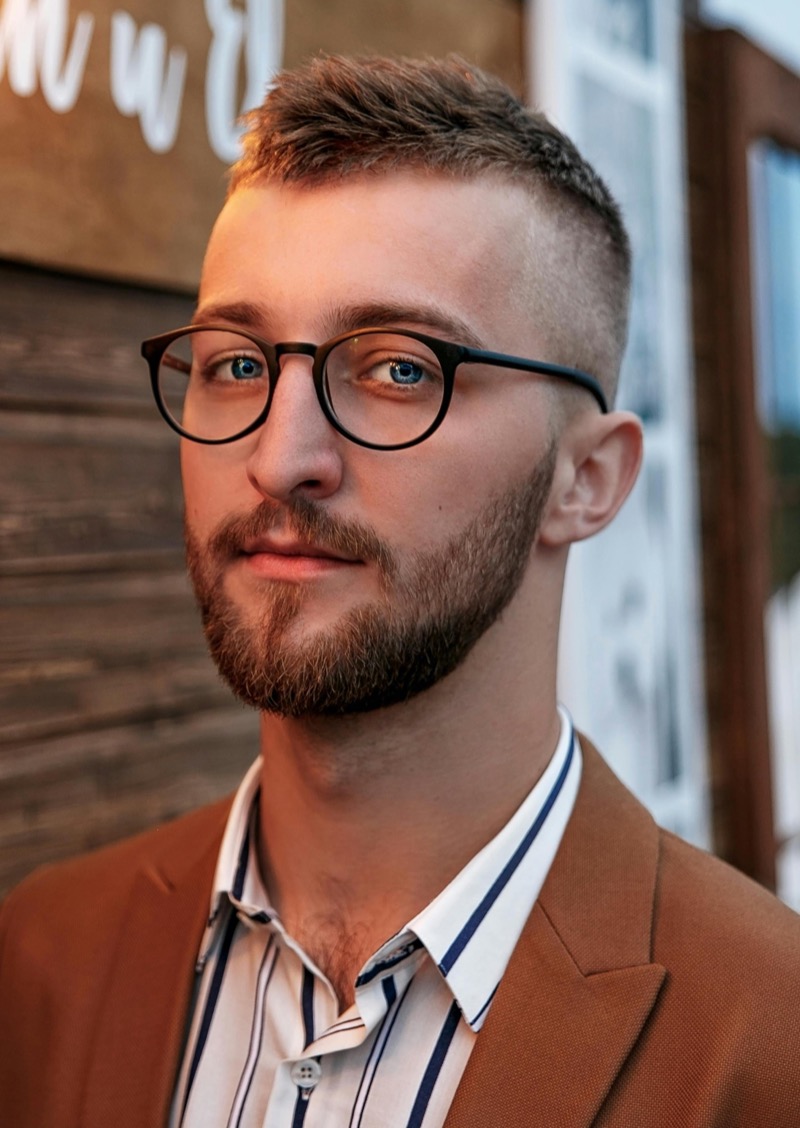
The high fade undercut stands out for its bold contrast. The sides and back are faded close to the skin, starting high above the temples, while the top keeps a short, textured layer. This cut carves a strong, clean shape that flatters most face shapes and keeps styling simple.
Curtain Undercut
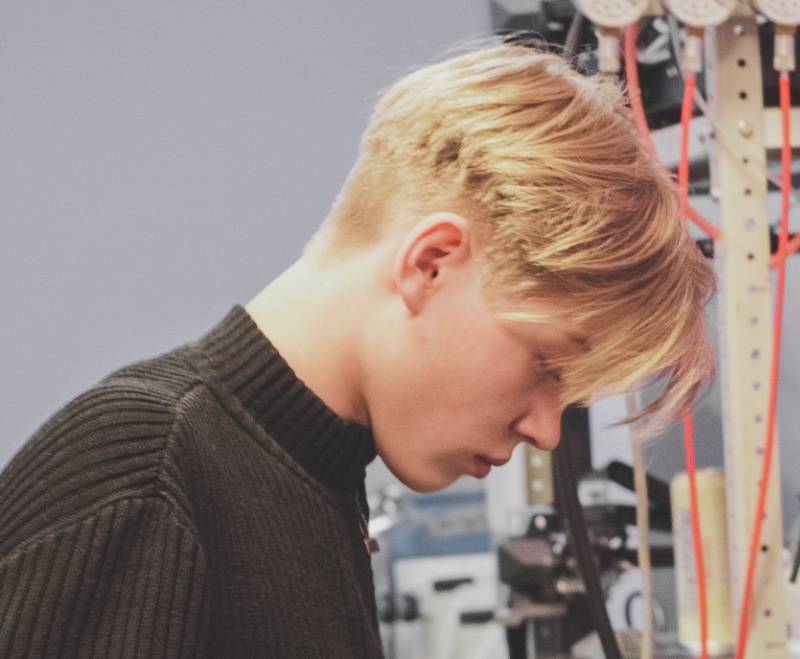
The curtain undercut channels the spirit of a 90s haircut for men, reviving that era’s laid-back cool with a sharper look. It’s defined by a longer top that parts down the center, resembling curtains.
Closely cropped sides refine the shape, drawing the eye to the volume at the crown. The contrast between the soft, curtain-like top and the tight sides creates a head-turning silhouette. The result is a curtain haircut that transforms a familiar form into a modern undercut hairstyle.
Disconnected Undercut
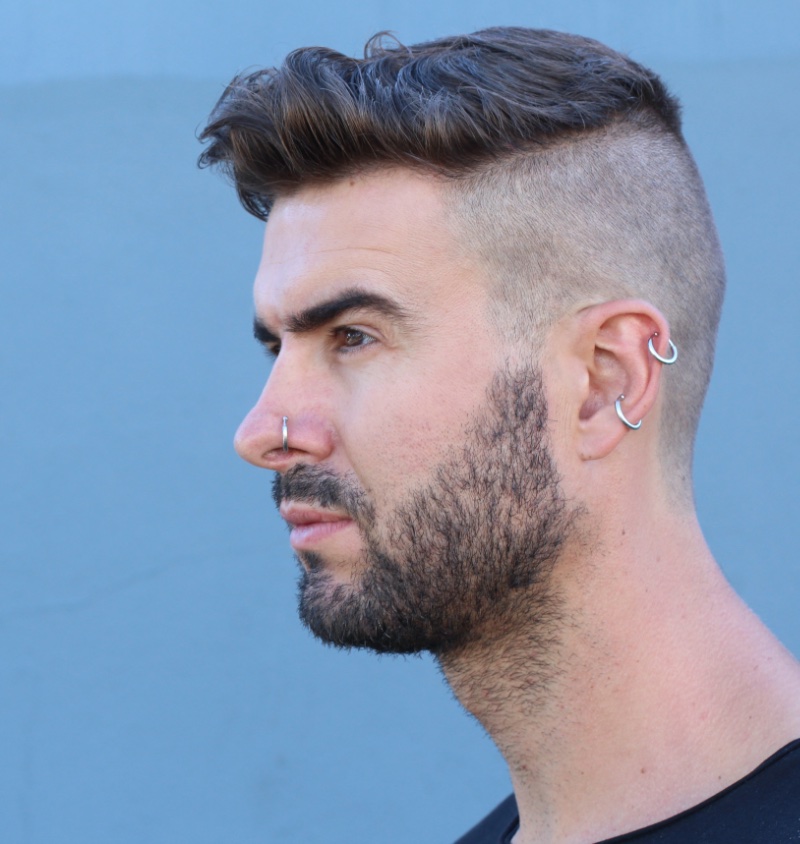
The disconnected undercut is characterized by a stark contrast between the short or shaved sides and the long hair on top, without a gradual fade connecting them. This bold statement is versatile and can be slicked back, side-parted, or left to fall naturally for a cool look.
Hard Part Pompadour Undercut
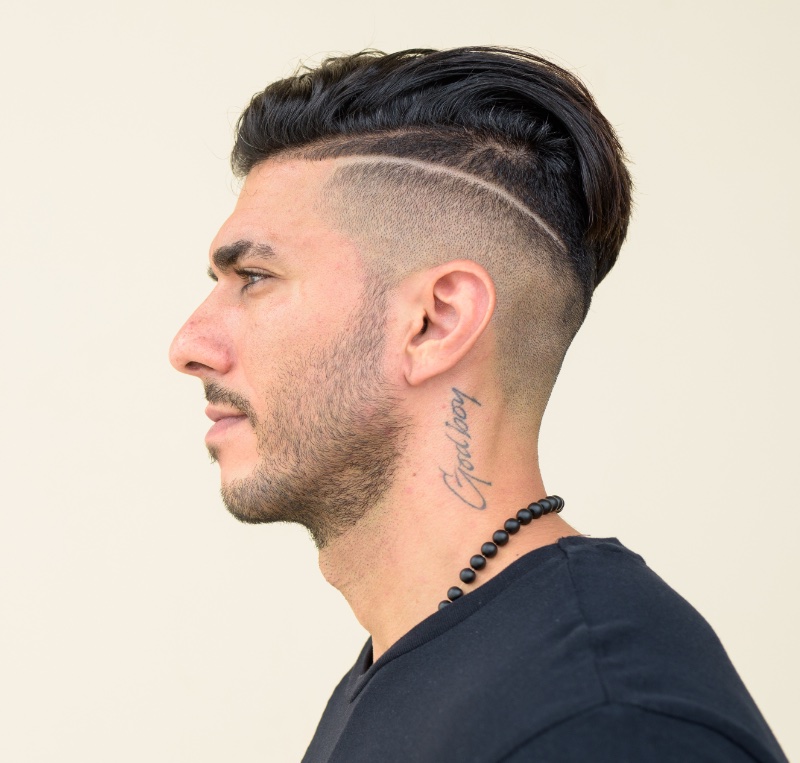
The hard part pompadour undercut combines sharp detail with classic volume. A hard part, created with a razor, separates the longer pompadour top from the short undercut sides. The result is strong contrast and a clean finish.
It gives the traditional pompadour a modern edge. The hard part draws attention to the height and shape, adding precision and visual punch.
Undercut Quiff
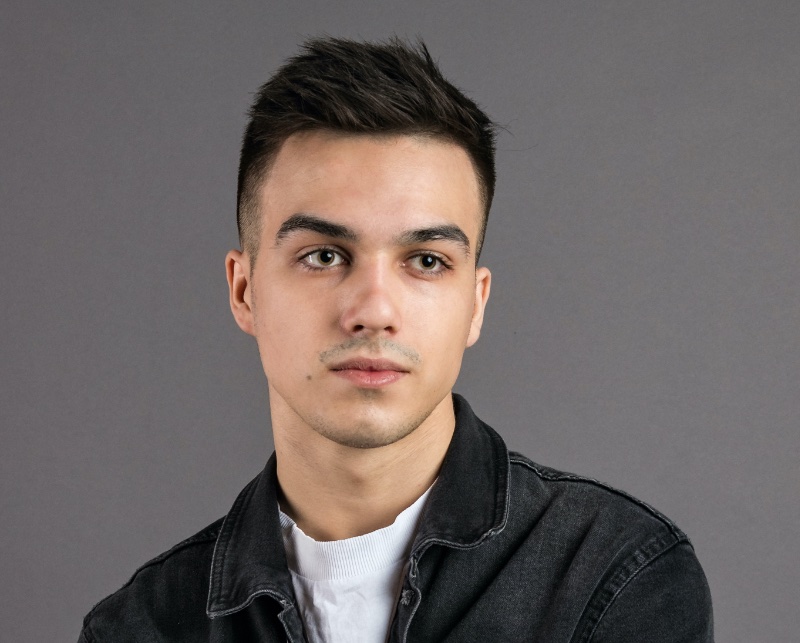
The undercut quiff blends classic volume with modern attitude. It features a full, swept-up top with short or faded sides, creating bold contrast and a clean silhouette.
Best suited for thicker hair, this style thrives on fullness to build the signature quiff shape. A sharp undercut emphasizes the difference in length, while a soft taper offers a more relaxed take.
Man Bun Undercut
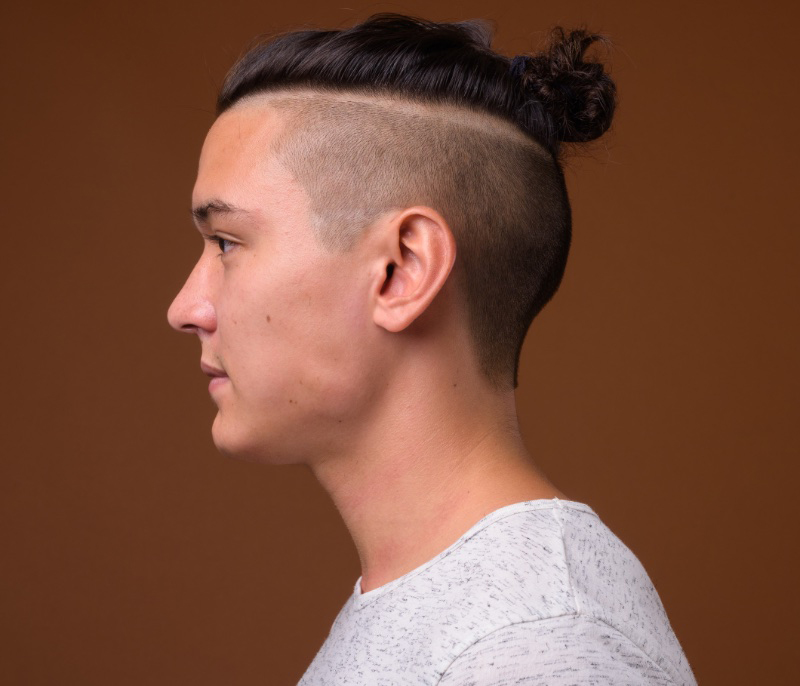
The man bun undercut is a fusion of two contemporary hairstyles, combining the undercut’s edginess and the man bun’s nonchalance. This style contrasts the shaved sides and back with the length gathered into a bun.
Mohawk Undercut
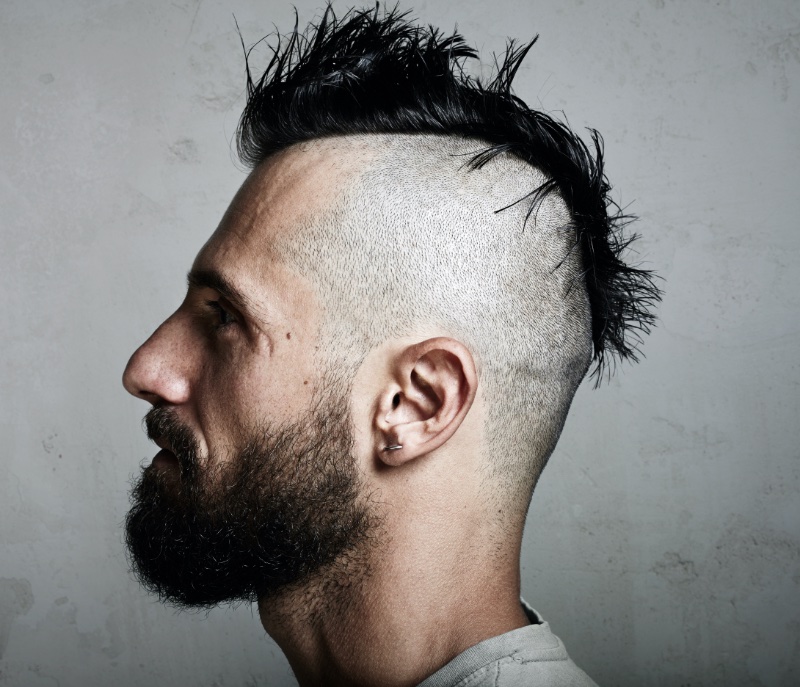
The mohawk undercut blends the mohawk’s rebellious edge with the undercut’s sharpness. It features short or shaved sides and a strip of longer hair through the center, often styled in spikes or loose texture.
This version tones down the classic mohawk, making it easier to wear in everyday settings like creative offices or weekends out. A fauxhawk variation offers even more flexibility by keeping the shape while softening the impact.
Mullet Undercut
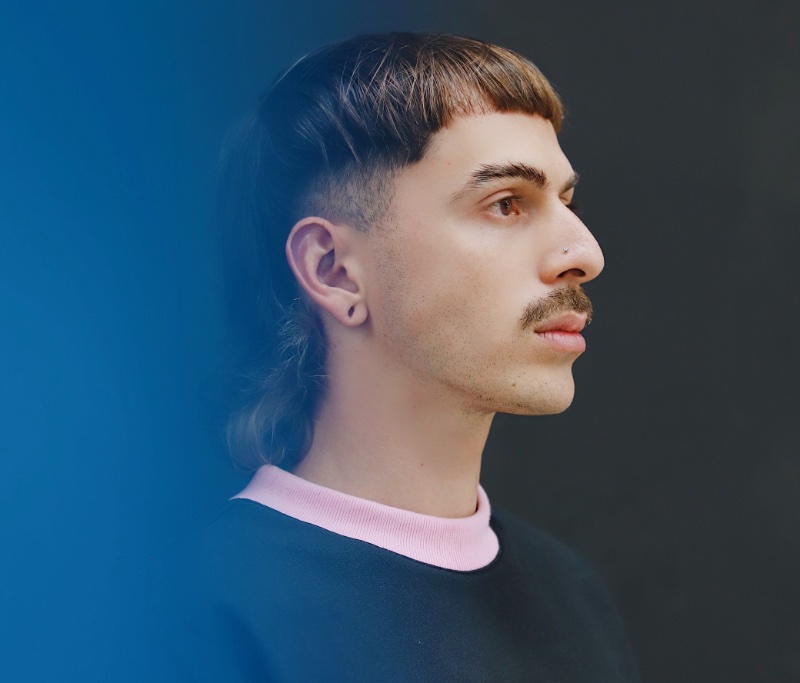
The mullet undercut is a contemporary rendition of the iconic hairstyle that dominated past decades. It maintains the classic mullet philosophy of longer hair at the back while the sides are closely shaved to give it a fresh edge.
This style encapsulates a dual-natured approach. It’s sleek at the front, transitioning to an uninhibited flow at the back.
Pompadour Undercut
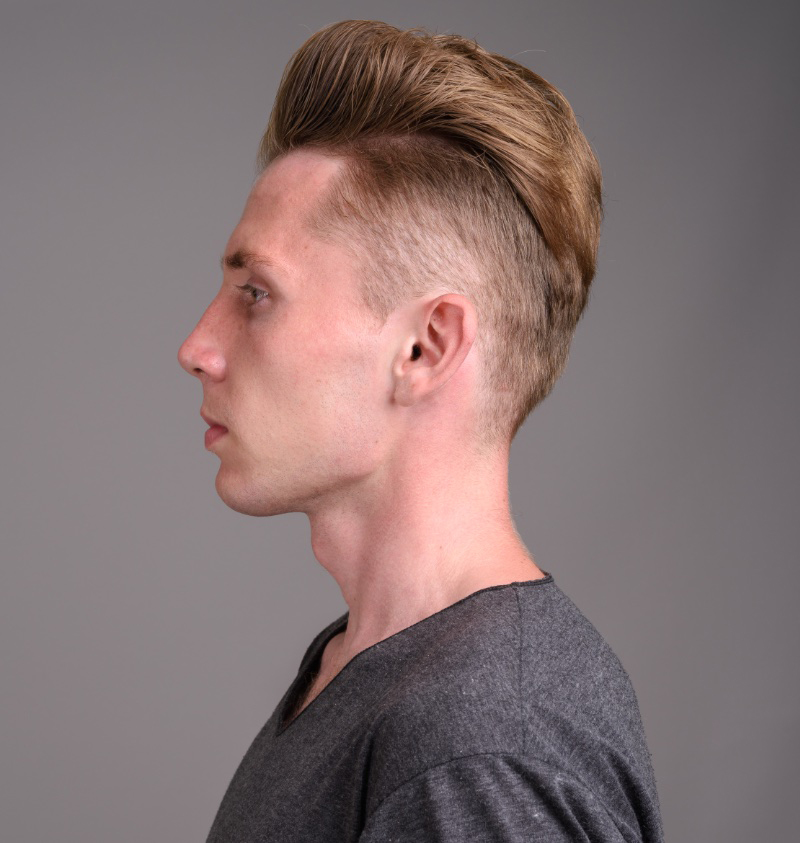
The pompadour undercut revives a classic with a contemporary edge. This style features the voluminous top of the pompadour paired with the clean, undercut sides.
The hair is swept upwards and back, creating a commanding look favored by icons over the decades. Ideal for individuals with thicker hair, this cut requires some styling effort to maintain its signature lift but pays off with a striking profile.
Middle Part Undercut
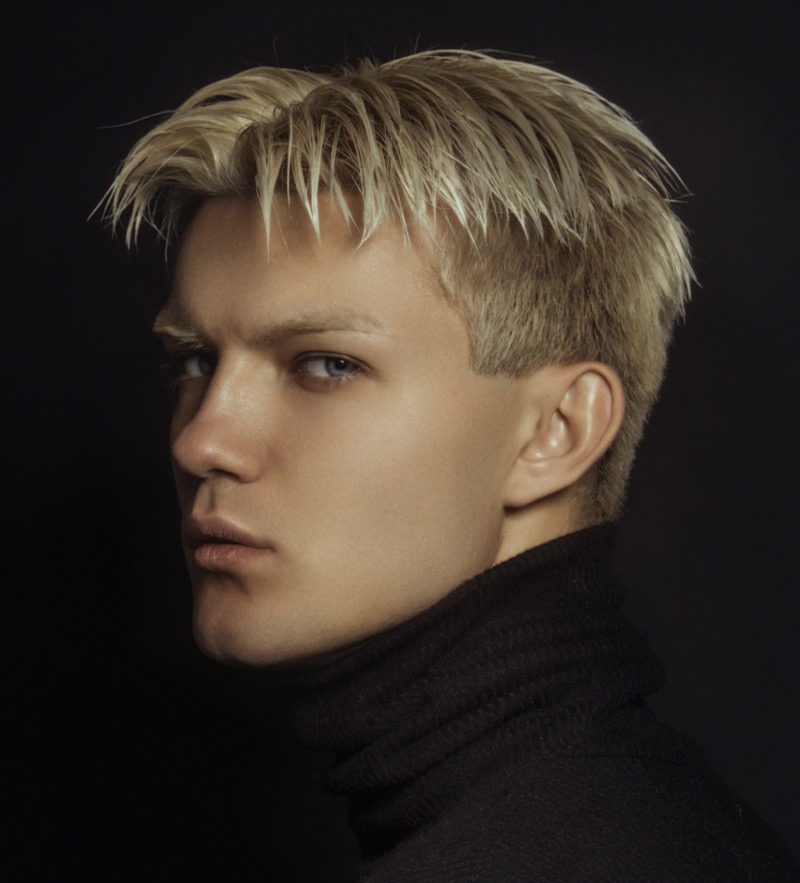
The middle part undercut stands out for its center parting, paired with short, tapered sides. The hair on top keeps medium length, parted down the middle and styled to sweep away from the face.
This cut works especially well for straight hair, giving the top structure and letting the undercut provide a clean finish.
Long Fringe Side-Swept Undercut
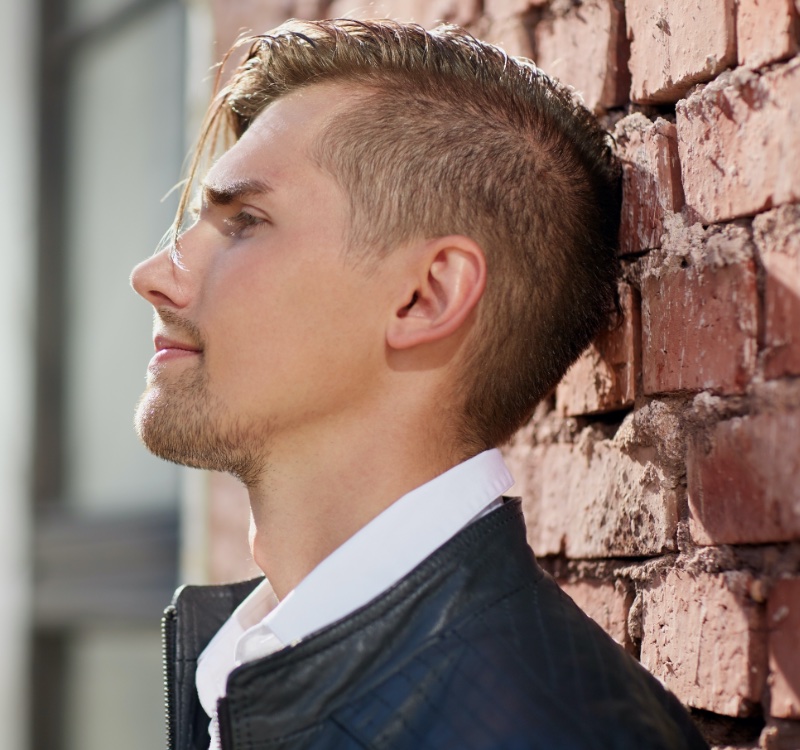
This variation of the side-swept undercut adds extra drama and movement. Instead of a subtle sweep, the top layer is left longer, allowing the fringe to fall past the brow for a bold, asymmetrical look.
The extended length adds styling flexibility. You can tuck it behind the ear, wear it loose for a windswept effect, or add texture for a high-fashion finish.
Slick Back Undercut
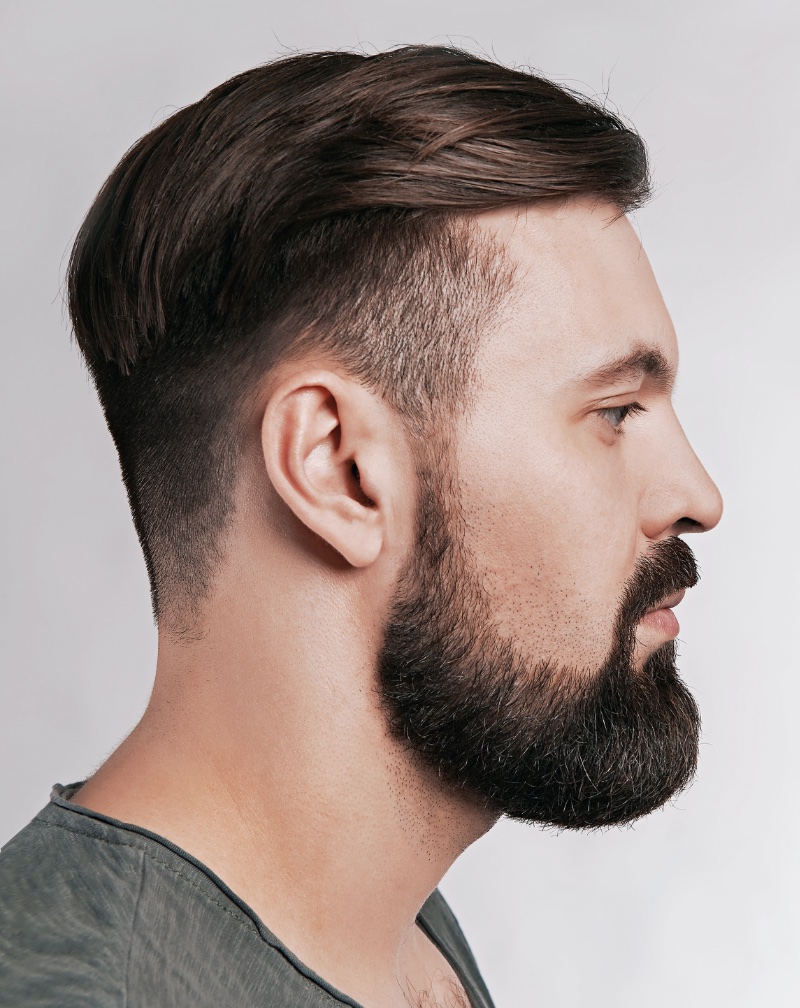
The slick back undercut remains a defining choice in men’s hairstyling, delivering a sharp look rooted in contrast. As a standout slick back hairstyle, it features a clear break between the closely shaved sides and the fuller, slicked-back top.
Undercut Low Fade
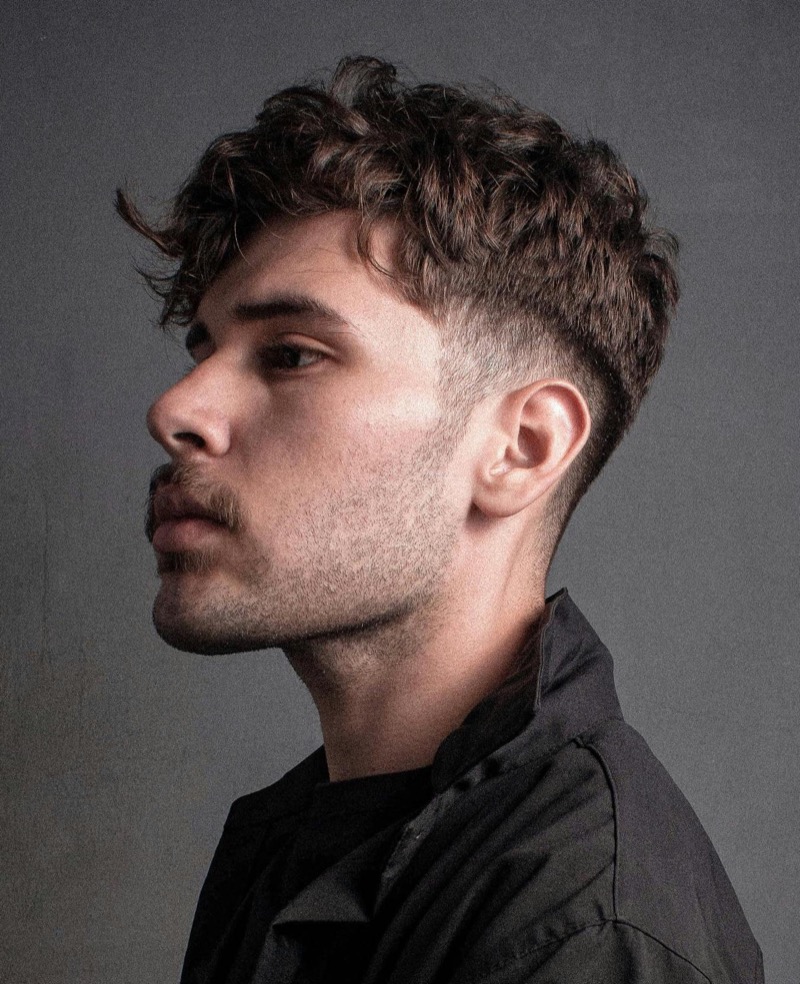
The undercut low fade blends textured length on top with short, tightly faded sides, delivering a style that draws on classic roots. The fade begins low near the ears and neck, while the top maintains enough length for natural movement or a loose, tousled finish.
This haircut works best with straight or wavy hair, as the contrast creates dimension and puts the focus on the top’s texture.
Side Part Undercut
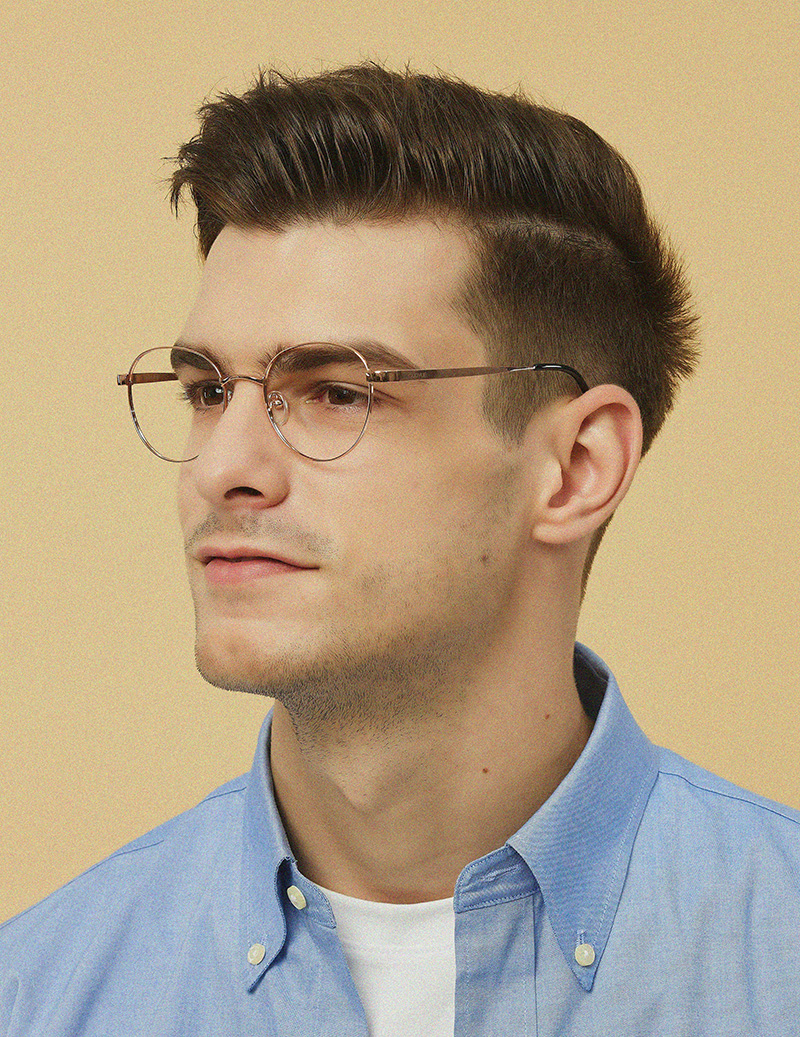
The side part undercut pairs a defined side part with short, cropped sides. The top keeps enough length for a clean sweep, while the part creates separation.
Drawing from classic barbershop styles, this cut works best for straight or slightly wavy hair.
Spiky Undercut
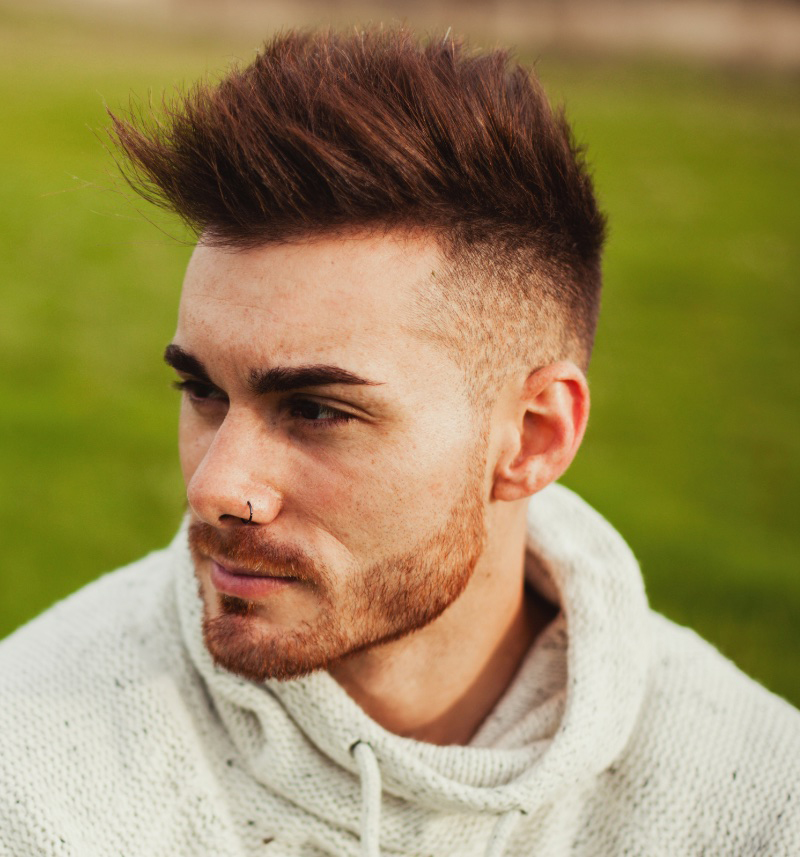
The spiky undercut embraces the spirited side of undercut styles. It features trimmed sides that underscore the contrast with the spiked top, typically styled with a product to hold the hair vertically or slightly tousled for a rebellious look.
Tapered Undercut
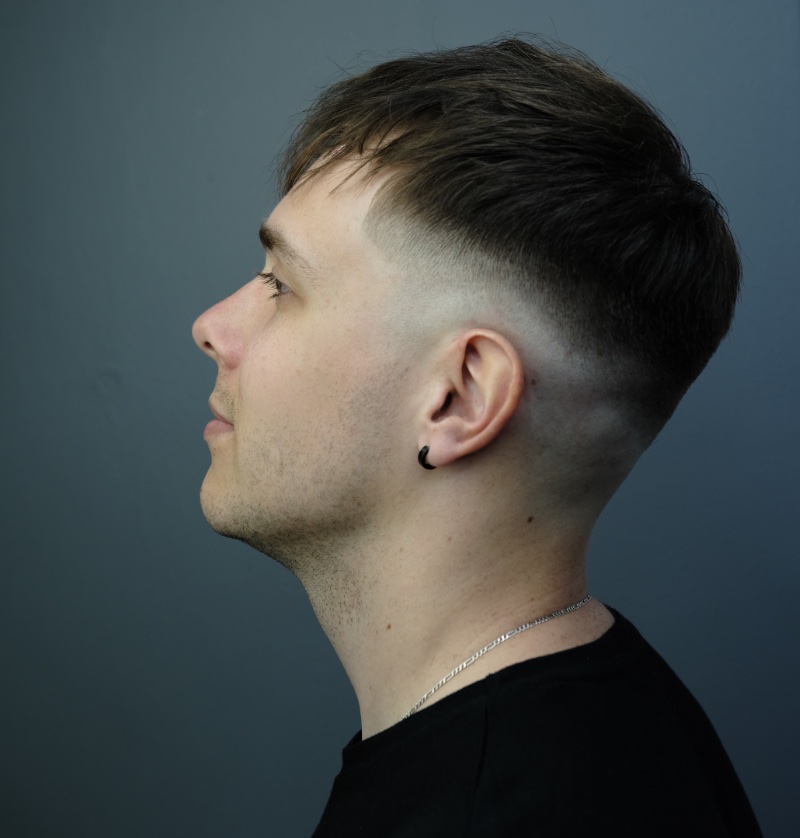
The tapered undercut presents a modern hairstyle that transitions from shorter hair on the sides and back to a longer, fuller top. The tapering effect is less abrupt than traditional undercut hairstyles for men, offering a softer contrast while maintaining the style’s signature disconnected look.
Medium Messy Undercut
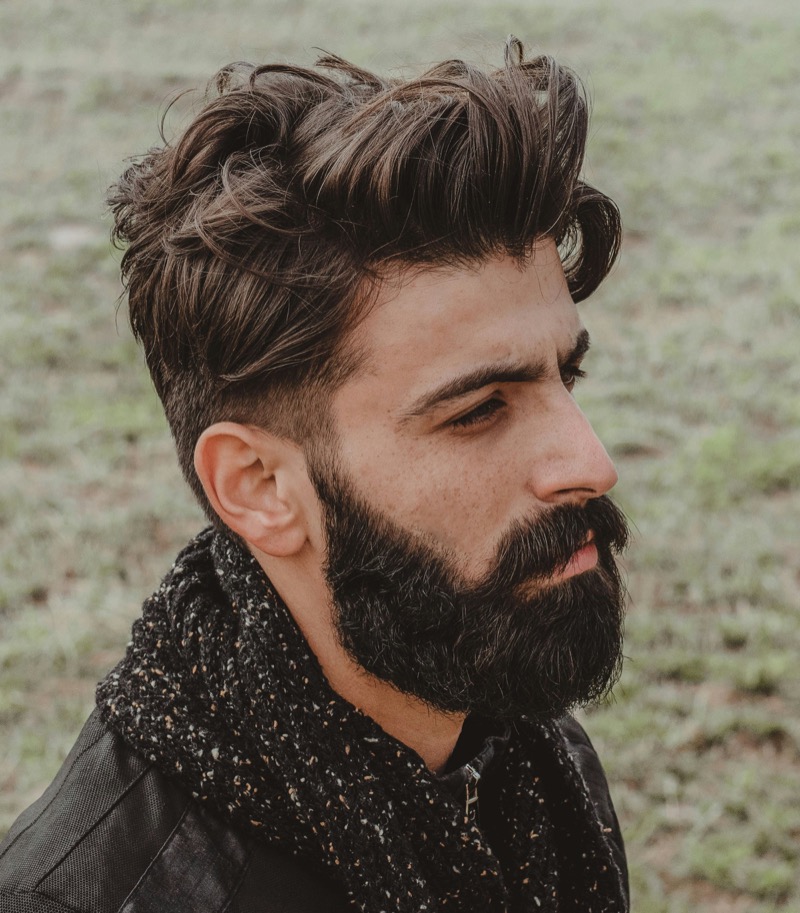
The medium messy undercut delivers texture and volume on top, set against trimmed sides for contrast. This cut keeps enough length up top for a relaxed, tousled finish, working especially well with naturally wavy or thick hair.
The medium messy undercut offers a sense of freedom. It’s easily styled by hand or left to fall naturally.
Textured Crop Undercut
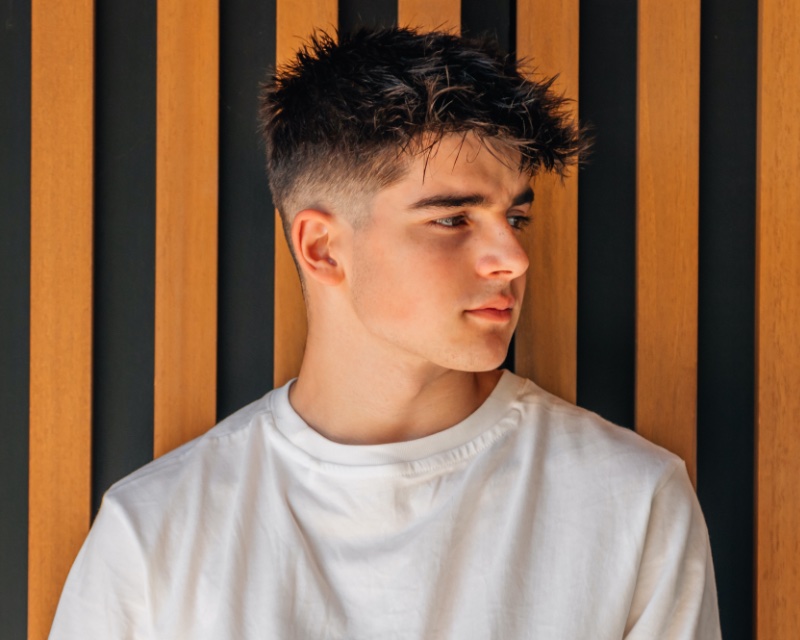
The textured crop undercut combines a cropped top with textured layers and a neat undercut. This hairstyle is characterized by its short, forward-styled fringe and choppy layers that add volume and movement.
The undercut provides a sharp contrast to the textured top, creating a youthful look.
Textured Undercut
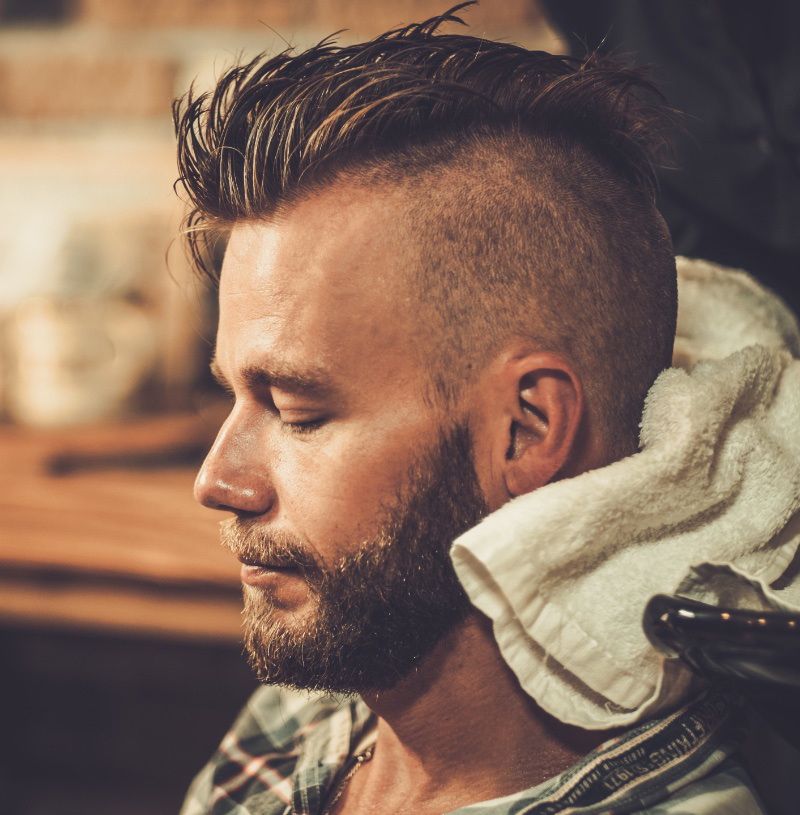
The textured undercut is a modern twist on the classic style that marries the clean lines of a traditional undercut with the rugged charm of layered, textured hair on top. The short sides emphasize the volume and movement of the longer, tousled top, making it a strong choice for those looking to add a dynamic edge to their aesthetic.
Messy Slicked Back Undercut
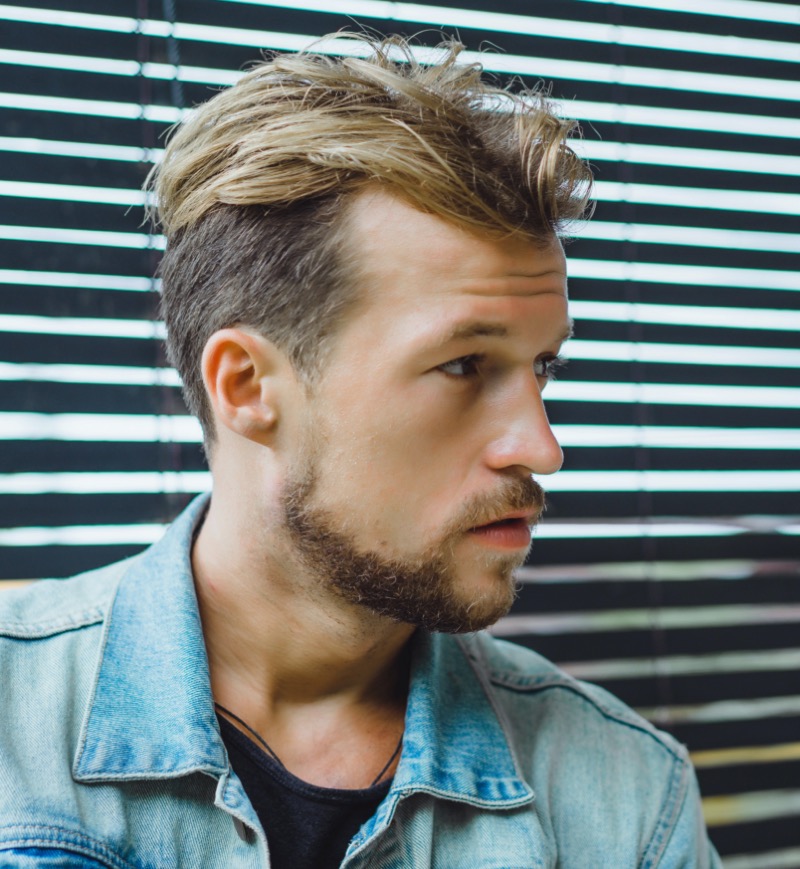
The messy slicked back undercut combines short sides with longer hair on top styled back in a loose, textured sweep. Unlike the traditional slick back, this look leaves room for an easy, lived-in finish.
The style draws on old Hollywood confidence but updates it with a relaxed spirit. Suitable for straight or wavy hair, the messy slick back undercut adapts to day or night with minimal effort.
Twisted Locs Undercut
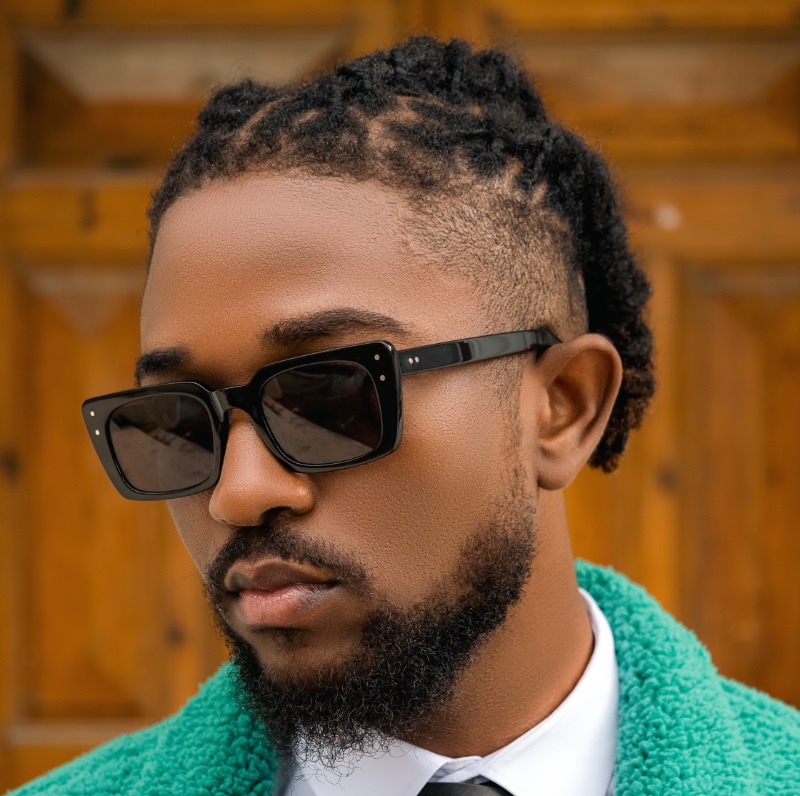
The twisted locs undercut combines the edgy look of an undercut with the cultural richness of twisted locs. The hair is sectioned and twisted into locs that stand out for their texture and form.
The sides are cut very short, creating a contrast that highlights the intricacy of the locs on top.
Undercut Designs
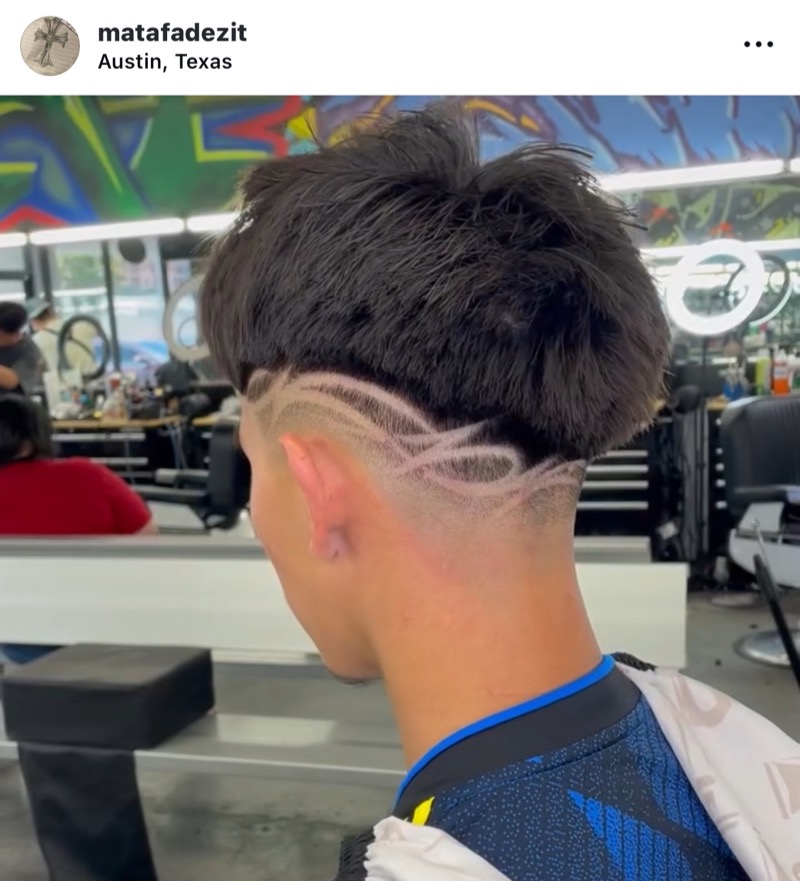
Undercut designs take the classic undercut to another level by adding bold patterns, lines, or shapes shaved into the faded section. This look is often called a hair tattoo or design fade undercut.
These creative touches transform the fade into a canvas, ranging from clean geometric lines to elaborate motifs. Undercut designs stand out in barbershop culture and on social media, celebrated for their artistry.
The Undercut: Tradition & Modernity
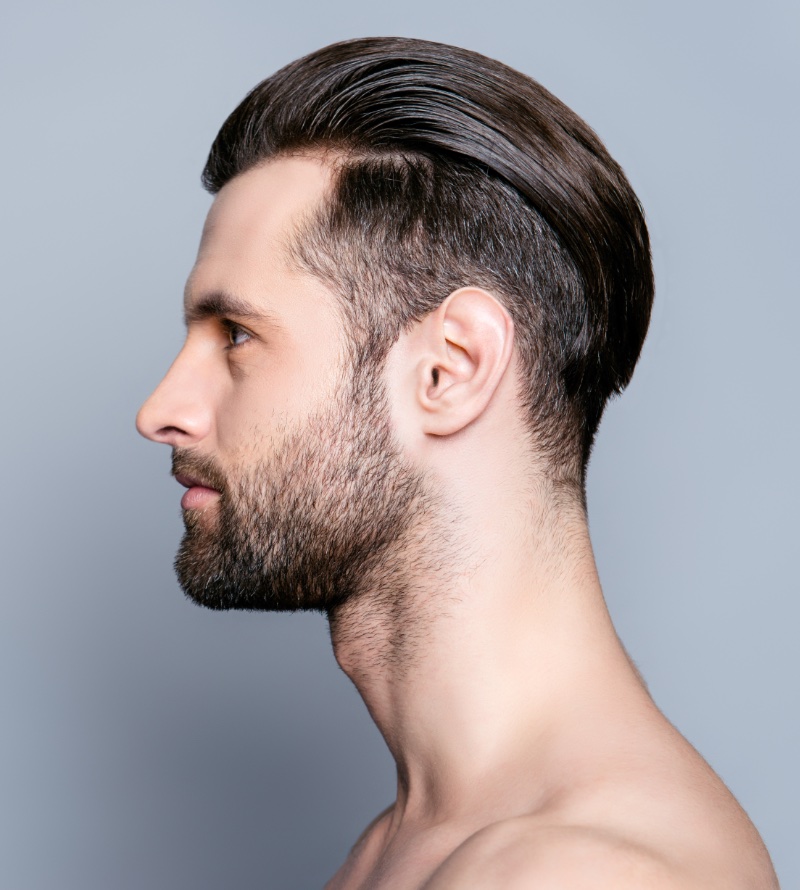
Undercut hairstyles channel individuality and a spirit of experimentation. From the graphic edge of a mohawk undercut to the ease of a comb over or the attitude of a man bun, these cuts adapt to personal taste and lifestyle.
Mixing textures and varying the length on top opens up new ways to wear the undercut for guys. Ultimately, an undercut works best when it feels like a natural extension of how you want to present yourself.
Notes on the Undercut
What to Consider Before Choosing an Undercut
The undercut is versatile, but making it work means thinking beyond the inspiration photo. Hair type, growth pattern, and face shape all influence how a cut will look and perform.
Assess Your Features
Face shape affects proportion. Rounder faces often benefit from added height, while strong jawlines may pair better with softer styles. Hair texture also matters, as straight, wavy, or curly types all behave differently when shaped.
Choose Realistic References
Use photos of people with similar features and hair to guide your choice. Bring a few to your barber to help align expectations, but keep in mind that every head of hair reacts differently.
Understand Styling Needs
Longer undercuts often require daily styling. Ask your barber which products work best for your texture and cut, whether it is clay, pomade, or sea salt spray. Knowing how to apply them makes a difference.
Plan for Maintenance
Defined fades and sharp outlines need upkeep. If you want your undercut to stay crisp, expect barber visits every two to four weeks. Waiting too long can make the shape lose its impact.
Communicating with Your Barber
Explaining what you want is just as important as knowing it yourself.
Be Specific
Bring clear photos that show the top length, sides, and overall shape you like. Point out details that matter, such as a fade level or texture.
Welcome Expert Advice
Barbers understand how cuts perform across different hair types and growth patterns. Their suggestions may improve your chosen style or help tailor it to suit you better.
Ask Questions During the Cut
Pay attention to how your barber finishes the style. Ask about products, techniques, and how to maintain the look. Learning a few tips helps you keep it sharp between appointments.

